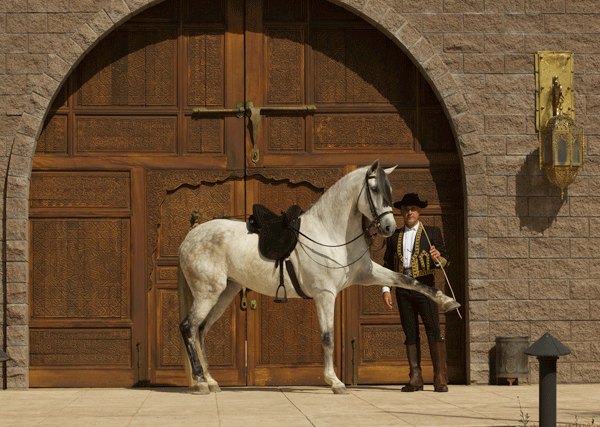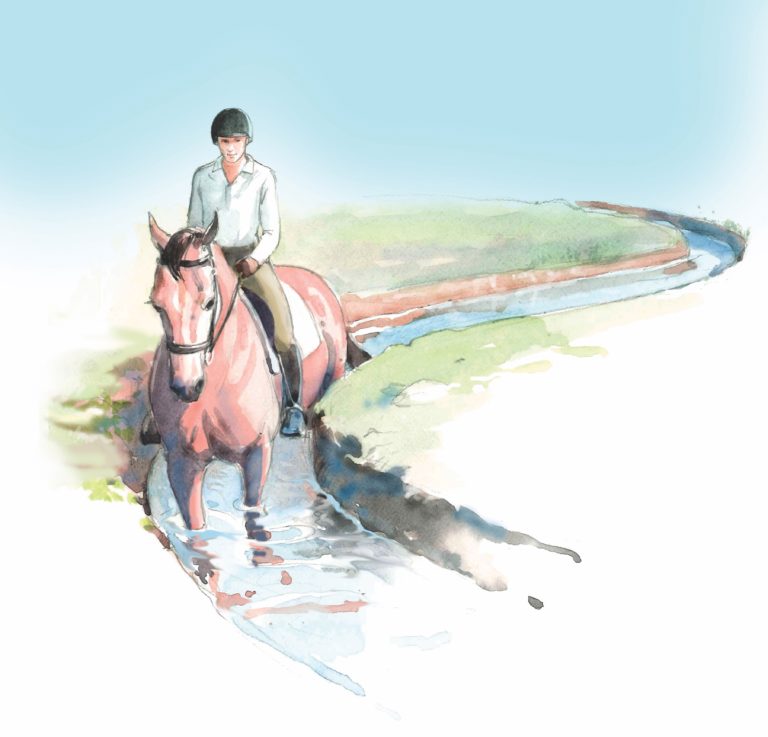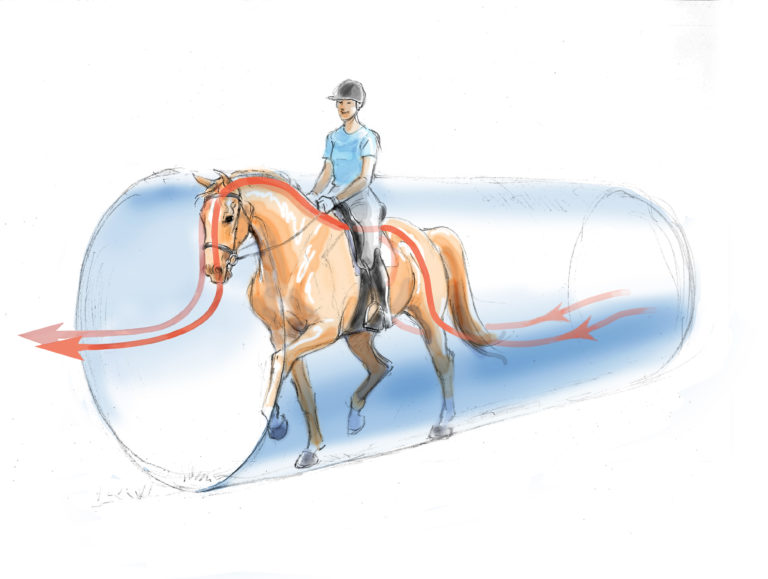
I have always admired the elegance and power of the Spanish trot and the passage. Is there a difference between these two movements or is the Spanish trot a Spanish version of the passage?
Manuel Trigo:
Spanish trot and passage are two different movements. The Spanish trot is a classical and almost lost movement. Only classical schools and some private trainers still train this movement.
The Spanish trot is a slow, cadenced trot with much impulsion, where the horse performs a jambette (more on that later) at each step with his forelegs. The cadence is the same as in the passage. The difference is that the horse lifts his forehand a little bit higher than in the passage and stretches his leg. In the passage, the forearms go horizontal, with the horse bending his knees, and the cannon bone being vertical.
The jambette, as in the Spanish walk, is the movement the foreleg does in the air, elevating and stretching the leg and keeping this position for a little while during the descending phase until reaching the ground. The jambette is also performed at the halt, where the horse stretches his leg and keeps it in the air for the longest time possible. The jambette is also performed in the pirouette on three legs. In this movement, the horse performs a jambette while doing a type of turn on the forehand, pivoting around his inside front leg. In the pirouette on three legs, the haunches are doing a
big circle while one foreleg is grounded and the other is in the air throughout the pirouette.
In the classical passage, the horse jumps from one diagonal leg pair to the other, moving only one stride forward, going as high as possible in the projection phase and for a longer period of time. In the Spanish trot, due to the jambette, the horse usually goes more forward in each stride than in the classical passage.
The balanced, perfect symmetry of the jambettes, amplitude, regularity and stability but also the collection while keeping the relaxation are the quality elements of a majestic Spanish trot.
There are two ways I teach a horse the Spanish trot. Both ways require that he is already confirmed at the Spanish walk.
In the first manner, I ask the horse to perform a Spanish walk very forward. I will elevate his withers slightly, lifting his neck a little bit. Then I ask for a transition to trot while my aids still ask for Spanish walk.
Usually the horse has no problems giving his first jambette at the trot. I stop immediately and reward him generously. I repeat the procedure until getting a second step, then a third, fourth, etcetera. After eight steps, I usually find that the horse understands the idea of the Spanish trot and I will start a phase of development of the Spanish trot.
The second manner of teaching the Spanish trot is geared toward horses who have already learned the passage. I start by alternating Spanish walk, walk, passage, walk, Spanish walk, etcetera. Then I passage and change my aids to Spanish walk. To avoid any confusion in the future, I ask for the Spanish walk still at the passage. At the same time, I point my riding whip forward or slightly touch the front leg when it is in the air to get a jambette. I reward generously after the first step of Spanish trot and repeat as mentioned in the first manner.
The aids have to be very clear to avoid confusion, even more so if the horse already knows the passage. The differences between the aids for the passage and the Spanish trot have to be clearly nuanced. When asking for Spanish trot, my aids are diagonalized (as for a passage), but with my wrists supporting my reins more and my legs slightly more forward.
The Spanish trot performed with cadence and brio is a magnificent gait. I wish that you are lucky enough to one day enjoy this almost-lost gait. As I like to say to my students: “In the saddle it feels like being the king of the world.”











